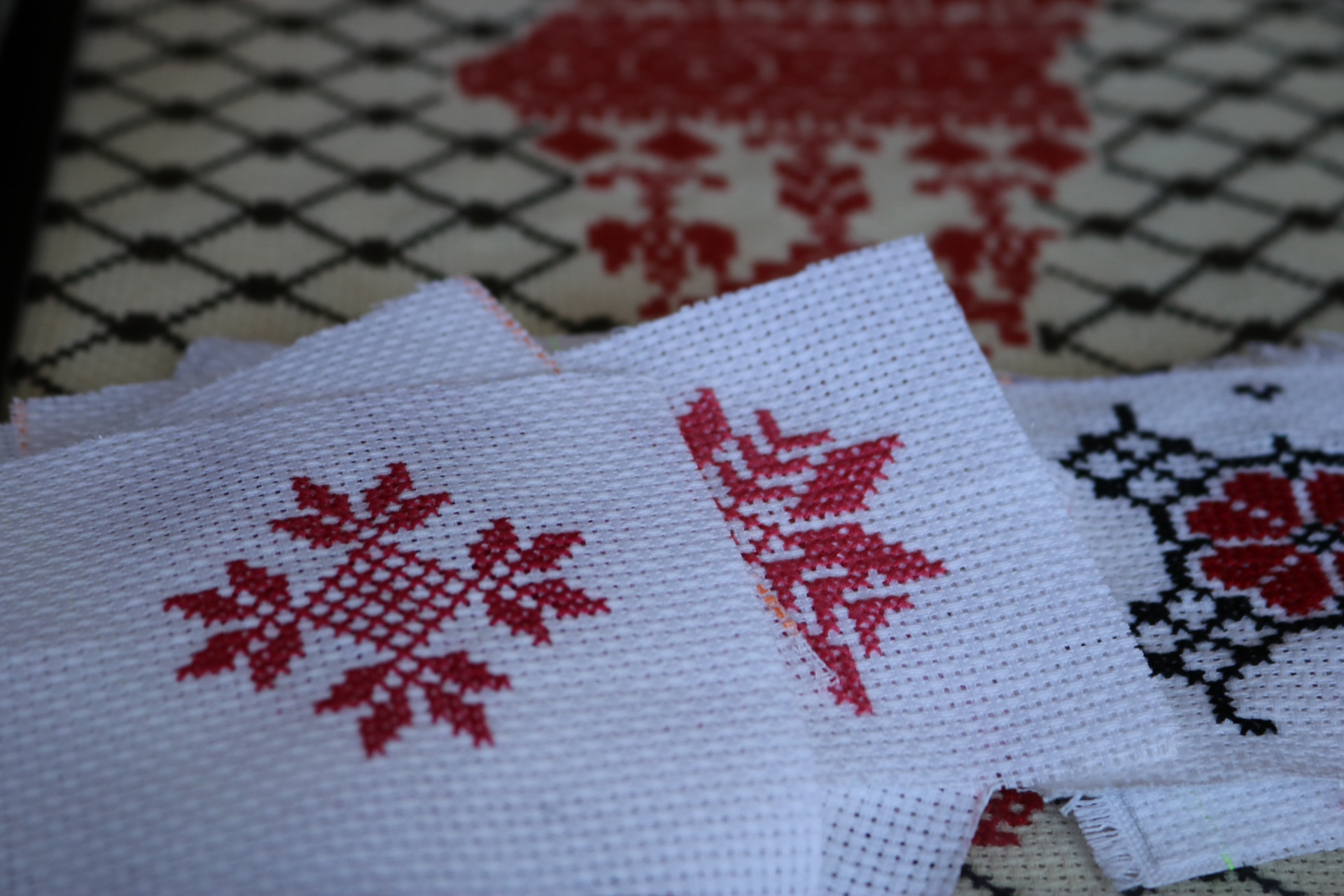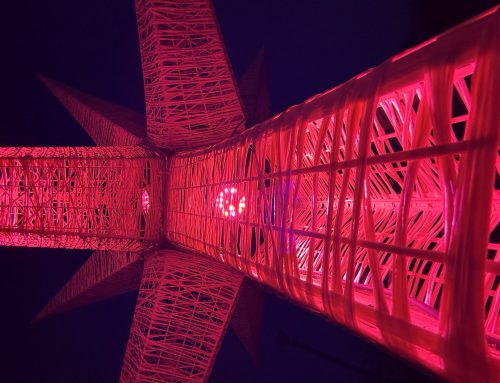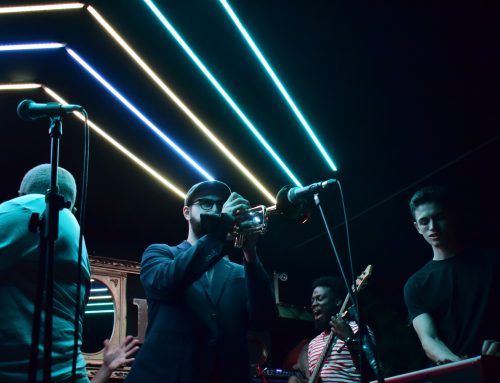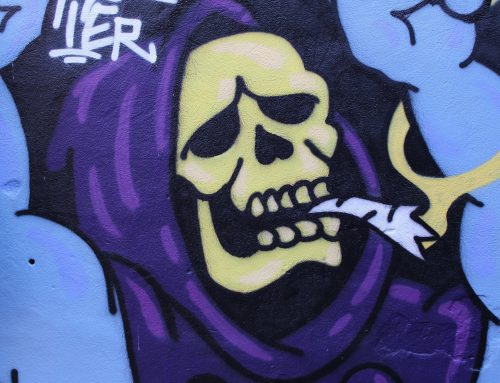BY Avril Paillot & Dana Hachwa
“I always draw the silhouette of Palestine in the olive branches of my art pieces, almost as a signature,” says Najat El-Taji El-Khairy, a Palestinian artist.
“The embroidery is the heritage of palestinian people,” states El-Khairy. “I have to raise awareness and I speak through my art, that is something that is me”
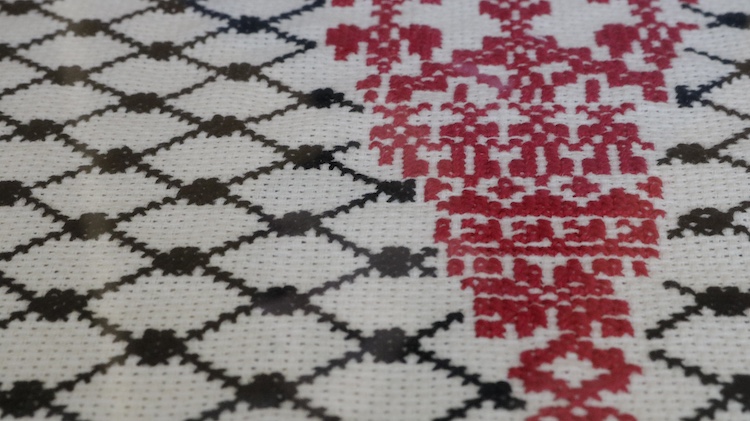
Palestinian embroidery, also known as ‘tatreez’, is a centuries-old tradition deeply ingrained in the cultural fabric of Palestine. Photo by Avril Paillot.
El-Khairy combines two arts in one; the art of porcelain and the art of embroidery.
“Embroidery is the identity of Palestinian people. It belongs to them. The porcelaine itself is a symbol for the Palestinian resistance. It’s durable, it’s there to stay,” she says.
El-Khairy’s journey into the realm of art began in her early years. Born in 1948 to Palestinian parents, El-Khairy’s exploration of various art forms, including music, ballet, painting and embroidery laid the foundation for her later endeavors.
After relocating to Montreal, Canada, in 1988, Najat honed her skills in porcelain painting, eventually merging her love for embroidery and porcelain to create unique painted replicas. As an advocate for Palestinian art and heritage, El-Khairy meticulously crafts pieces, featuring copyright painting techniques with displays in numerous museums and galleries across North America.
“Embroidery is the identity of Palestinian people. It belongs to them. The porcelaine itself is a symbol for the Palestinian resistance. It’s durable, it’s there to stay,” she says. “It is something that wanted to come out of me. We have to preserve our art that is being stolen. To show people that this art that other people are stealing, is ours, but in a very nice and beautiful way, through art.”
The Musée des métiers d’art du Québec (MUMAQ), in collaboration with El-Khairy, hosted an exhibit in 2018 named “Palestine heritage… Worth Celebrating!”. It featured embroidered textiles, traditional dresses, jewelry, and olive wood sculptures from Palestinian private collectors, alongside artwork by El-Khairy.
“It should still be shown, as an itinerant exhibit but until now we haven’t found a place to take it,” says El-Khairy, “I am ready to do it anytime, everything is ready.”
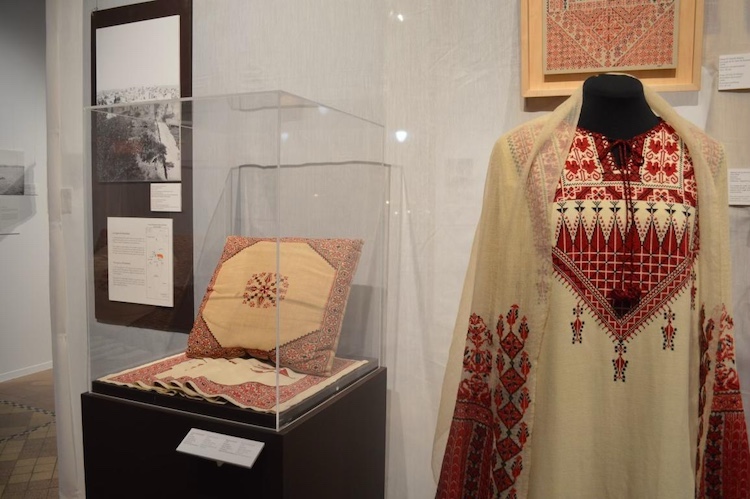
According to MUMAQ, the opening night of the exhibit “Le patrimoine palestinien… ça se fête!” was a success and welcomed more than 300 people. Photo by Najat El-Khairy.
The Canadian Palestinian Foundation of Quebec (CPFQ) has been assisting newcomers in adapting to their new life in Canada since 1988.
Wafaa El-Loubani, a member of the foundation’s Executive Committee, emphasizes the importance of art as a tool for understanding and preserving cultural heritage, especially for the younger generation.
“Parents want their kids to know about their culture, and to show our culture you have to have art, says El-Loubani. “It is part of our identity.”
After the Israeli invasion of Gaza on October 7, 2023, El-Loubani noticed people around her asking her more questions about Palestine.
“Art gives you the idea to understand what is going on, and people want to know the truth. And the people in Palestine, they want us to know about them.”
El Loubani explains that each area of Palestinian embroidery “has has a special address, made with special stitches and colors. Palestinian embroidered dresses always carried deep historical, social, and symbolic significance, reflecting on the rich Palestinian identity and the connection to the land.”
Timeline of the contemporary Palestinian history. Timeline by Avril Paillot.
“Art has played a crucial role in the Palestinian resistance, serving as a means of expression, documentation, and resistance against occupation and injustice,” asserts Dr Nadia Wardhe, a university professor and former director of the Middle Eastern Studies program at the American University in Dubai.
“Through various forms of artistic expression, Palestinians have found a platform to share their stories, struggles, and experiences, shedding light on the harsh realities of living under occupation,” says Wardhe.
“Art serves as a potent instrument for reclaiming and reaffirming the Palestinian identity in the face of adversities,” Wardhe emphasizes. “Major geopolitical events have played a significant role in shaping artistic movements in Palestine.”
Given their history of displacement, many Palestinians create art that transcends borders and reflects their rich heritage and personal experiences, explains Séverine Barnoin-Dupuy, history professor at Collège Stanislas.
“[Palestinians] work from all around the world. Creative resistance has always been part of the Palestinian art,” she says. “In the 80’s, there was a huge resistance movement, mostly pushed by street art. It was, at the time, the quickest way to express oneself. Many art galleries also appeared at that time.”
Initiatives like the ‘ArtLab: Palestine’ aim to engage Palestinian youth in art education and community projects, while institutions like the Palestinian Museum in Birzeit house extensive collections of artworks related to the Nakba and Palestinian culture.
“Palestinian artists have been actively engaged in ensuring that their heritage lives on,” Wardhe highlights.
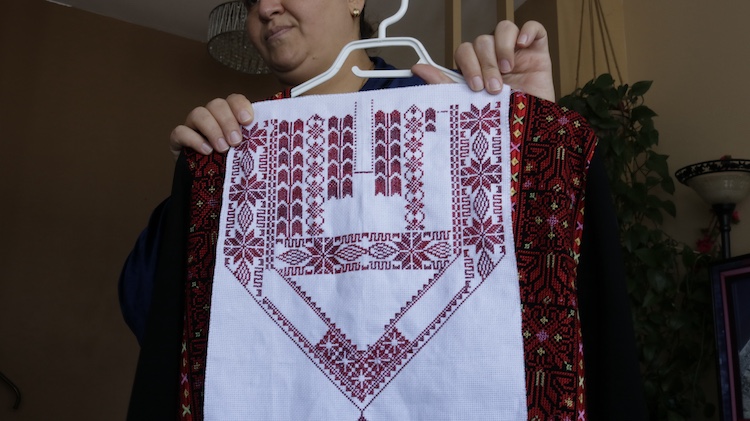
Piece by piece the embroidered takes form. Photo by Avril Paillot.
Sara Kishta is behind the art account Borders Embroidered with her twin sister.
“I mean the whole family is behind really,” precises Kishta.
Embroidery has been about family in Sara’s life. Her aunts and grandma taught her to stitch, sitting in a circle on the floor. They still embroider together, a stitch at the time.
Kishta wants to spread the Palestinian art outside of Gaza. Even if each embroidered pattern has a meaning, “the possibilities of embroidery are endless,” she explains.
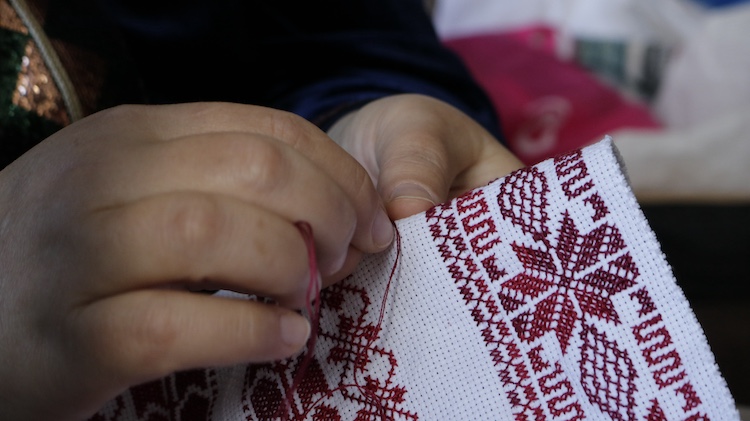
“Each area has specific motifs because women embroider what they see around them” explains Sara Kishta, a Palestinian artist. Photo by Avril Paillot.
The Instagram account was never about becoming a business, but about displaying the art.
“But then we started to have too many frames,” retells Kishta, “so we started selling a bit,” says Kishta. “Through my art I am holding onto every little piece of memory, every person I talked to, every shop I went to. I am holding onto them as my children because they are not here anymore.”
In 2021, traditional Palestinian embroidery got recognized for its cultural significance and got inscribed on the Representative List of the Intangible Cultural Heritage of Humanity by UNESCO.
“Intangible means that you cannot touch. But how come you say embroidery that you cannot touch, you always touch it to make it,” says El-Khairy.
“The lexique is not right,” says El-Khairy about UNESCO’s decision. “You should not diminish the facts by adding some other words that can create doubt in people’s minds.”
Montreal is a champion at platforming Palestinian resistance art, but censorship continues to be a threat for artists in the Palestinian Liberation Movement. Video by Dana Hachwa.
“It’s become ingrained in my personality; I don’t think I’ve ever done anything else,” explains Dana Noor, a Palestinian student at Concordia University known for her activism.
“From my early memories, I remember having to understand,” explains Noor, who explains that her father was arrested at a checkpoint for no reason.
Noor also creates art, mainly poetry. Since the invasion of Gaza, art became more about taking care of herself. Creating was then the only thing she could do:
“I remember feeling I needed to make something,” she says. “I have so many friends who use art to express themselves. Our art is something that will be looked over”
Politics can scare people away, but many people in Montreal want to know what is happening, explains Noor.
“They usually get educated about the cause through culture and art, as it is a nice way to introduce people to Palestine without polarizing,” says Noor.
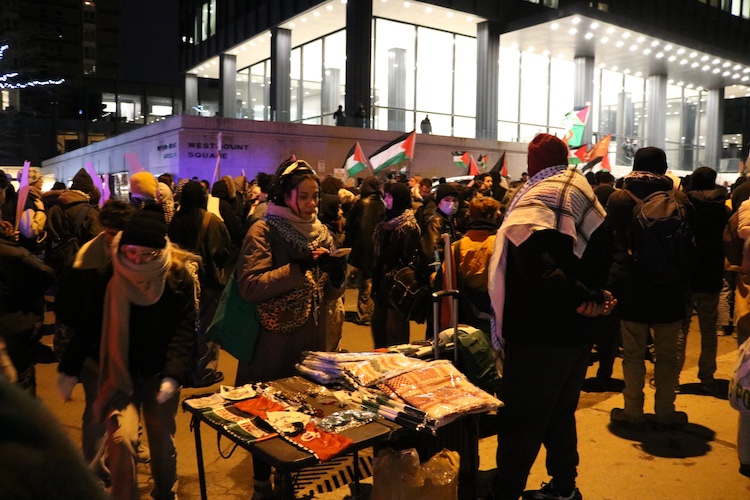
People gather in Montreal for a cease-fire manifestation in solidarity with Gaza. Amidst the crowd, an art stand adds a poignant visual element to the demonstration, reflecting the intersection of activism and creative expression. Photo by Avril Paillot.
“Nothing rises and does not fall,” reminds El-Khairy. “Peace will not reign in the whole world until it starts in Palestine.”
